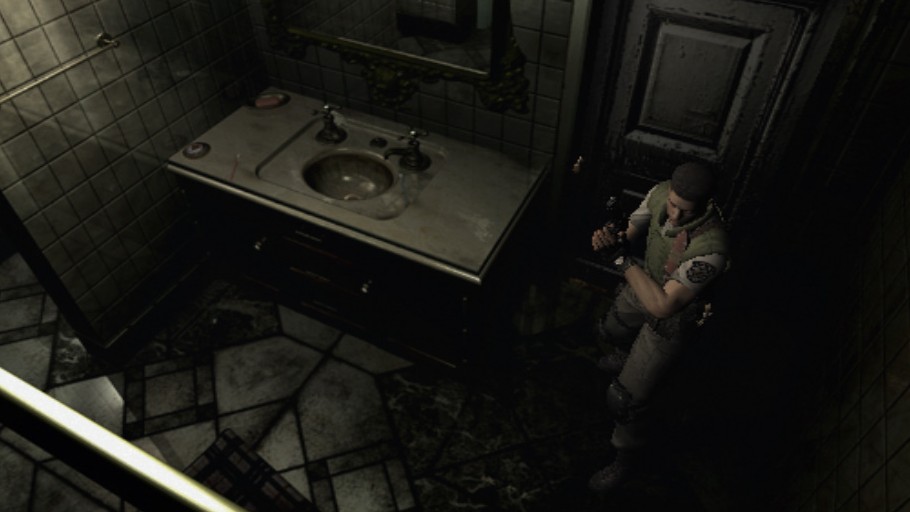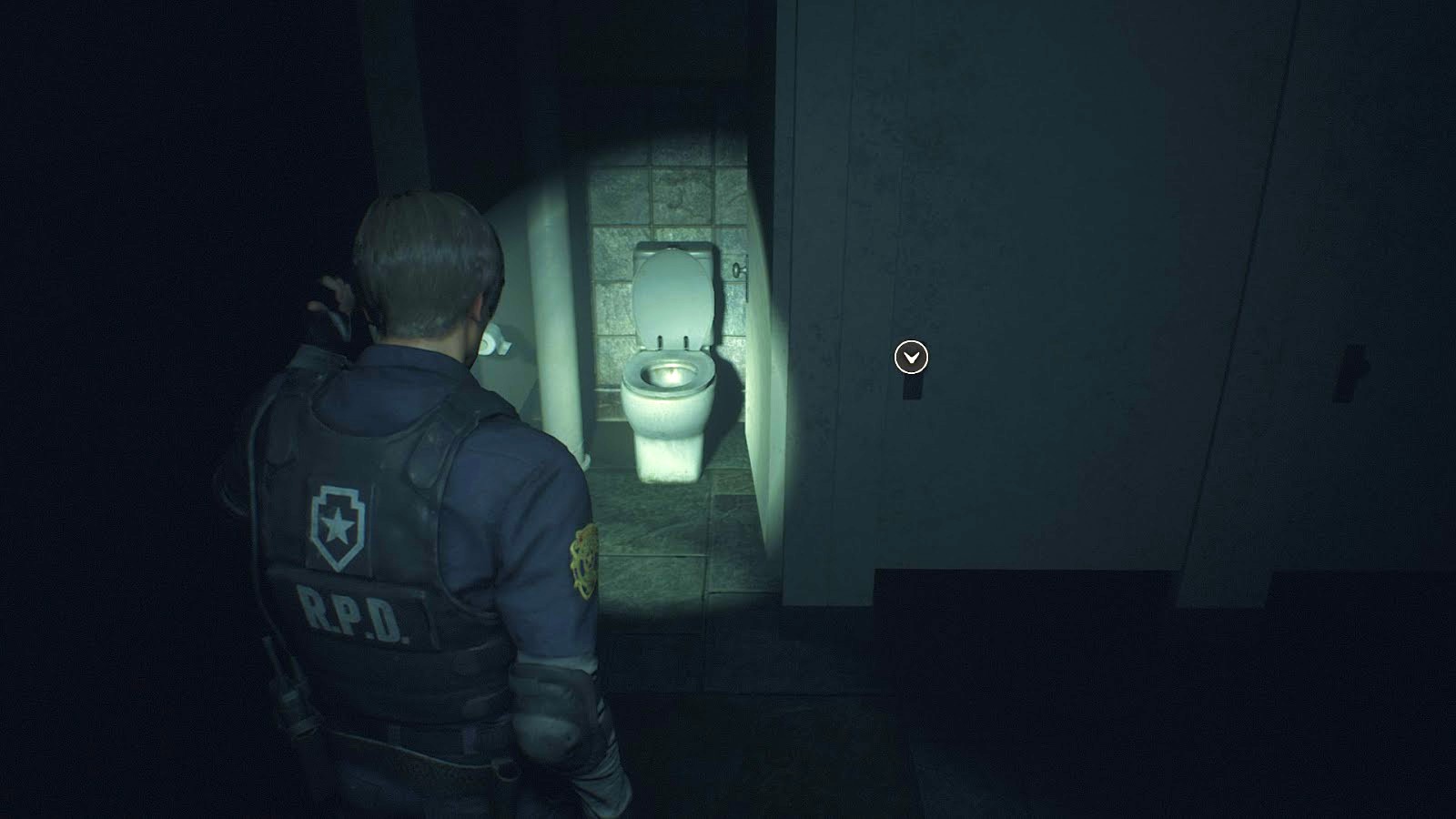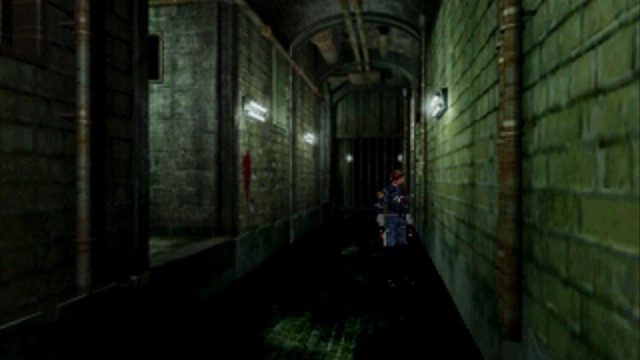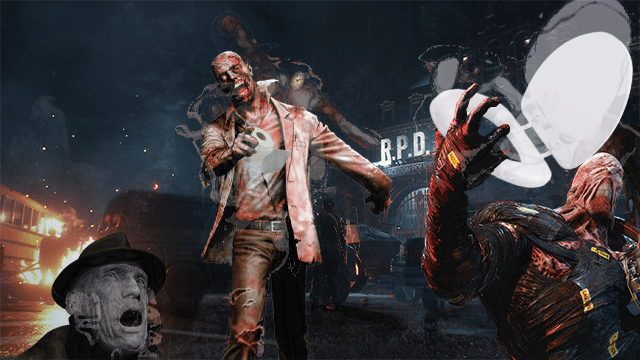In ‘Where are the Toilets?’ we take a look at some of the absurdities in video game design and try and find an in-universe explanation for them. For the first edition of the articles, we take a look at Resident Evil’s Raccoon City and its startling lack of restrooms.
Raccoon City is one of gaming’s most iconic locations. We watched this midwestern town get wiped off the map in 1998 after a massive zombie outbreak across multiple titles. There’s a good chunk of the city we never got to explore, but the areas we did visit were so effective because they felt so real, at least for the most part. However, there’s a deeper mystery surrounding places like the RPD and the Umbrella Labs, which isn’t mentioned in-game — where are the toilets? These people have to pee, right?
Raccoon City’s architecture issues

In the original Resident Evil 2 and 3, there are no bathrooms at all. We travel through the RPD, a restaurant, a bar, a hospital, offices, labs, factories, and there’s not a single toilet to be found. Heck, there are only a few sinks. Even the Spencer Mansion itself only has one lonely bathroom (oddly, the dormitories behind the mansion have the highest bathroom density in the series, with one in each bedroom).
The Resident Evil 2 remake rectified the lack of bathrooms somewhat, but even it only has a public men’s and women’s restroom in the 1F east wing. Any way you cut it, Raccoon City has a startlingly low density of sanitary facilities.
Let’s take the RPD, for example. Raccoon City is a Midwestern city with around 100-150,000 citizens. An excellent real-life analog would be Topeka, Kansas. According to the Topeka Capital-Journal, the Topeka Police Department has a total of 331 employees stationed in one precinct. Much like Topeka, it seems Raccoon City is served by just the main RPD building.
So, from the above information, we can assume that the RPD employs around 350 people, a quarter of which are on the premises at any one time. That means 88 people have to go their whole shift with either no toilets (original RE2) or around six toilets (RE2 remake). Even with the best-case scenario, there are 14.6 RPD workers for every toilet in the station. That’s a lot of numbers ones and twos being confined to a single bathroom.
Did poor sanitary conditions accelerate the Raccoon City outbreak?

From what we can stitch together from the various Resident Evil games set in Raccoon City, the t-Virus infection that came to affect most of the residents only took about a week to spread throughout the area. Obviously, the t-Virus was incredibly infectious, especially with all the zombies and other nasty critters running around biting it. This explains why the infection so rapidly depopulated the city, but there’s a fact the games never address.
By design, the t-Virus was meant to be lethal, but Wesker’s Report 2 — a supplement to the 2002 remake of the original Resident Evil —stated that around 10% of humans were naturally immune to it. However, no one, besides the player characters, shows any resistance to the disease. Even if a person didn’t become infected, they could undoubtedly succumb to traumatic injury, but we should see at least a few people manage to survive their wounds. Statistically, 1 in 10 people who are bitten should recover. So, what’s the deal? I postulate that it was the lack of bathrooms that was the final straw for Raccoon City.

Since it’s almost certainly Umbrella’s fault that Raccoon City has a pitiful amount of toilets and sinks, what’s the angle? Some might think it was a ploy to create the perfect environment for a biological weapon to spread, but I don’t give them that much credit. Instead, I think they overbuilt in the sewers without any regard for using them for their intended purpose. After all, there are multiple labs, factories, and other installations beneath Raccoon City’s streets connected by the sewer system. You can’t have all that real estate down there when there’s 150,000 people’s worth of pee and poop flying around.
If I had to guess, Umbrella discovered that their new facilities made water treatment impossible and lobbied to have Raccoon City’s building codes modified to make new bathroom construction a costly and lengthy process. Umbrella-employed plumbers had probably painstakingly run new lines to each new toilet built there to create a second sewer system that didn’t affect the subterranean metropolis the company ended up building. Unfortunately, most of the citizens couldn’t afford the permits, which severely impacted hygiene and sanitation. Notice how no one ever mentions smelling a zombie? That’s why.
Alas, the T-Virus might have destroyed Raccoon City, but the town was a ticking timebomb regardless. Even a veteran police officer like Marvin Branagh didn’t follow the most basic first aid guidelines when bitten as we see him running around multiple days across multiple titles with a open and festering gut wound. I think Ada bandaging Leon is the only form of medical aid we see throughout the series, and she manages to bungle it by doing it over his clothes. Fortunately, by this point, Umbrella had rerouted the city’s plumbing to the point where the sewer water was clean enough to drink, which at least prevented Leon’s arm from turning gangrenous and falling off.







